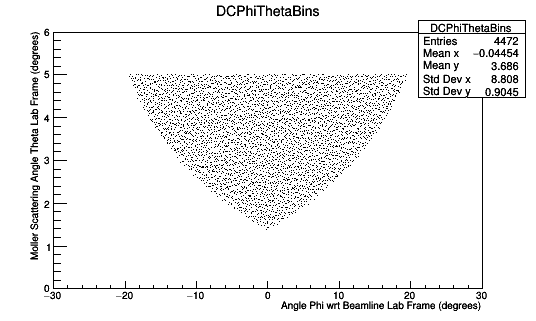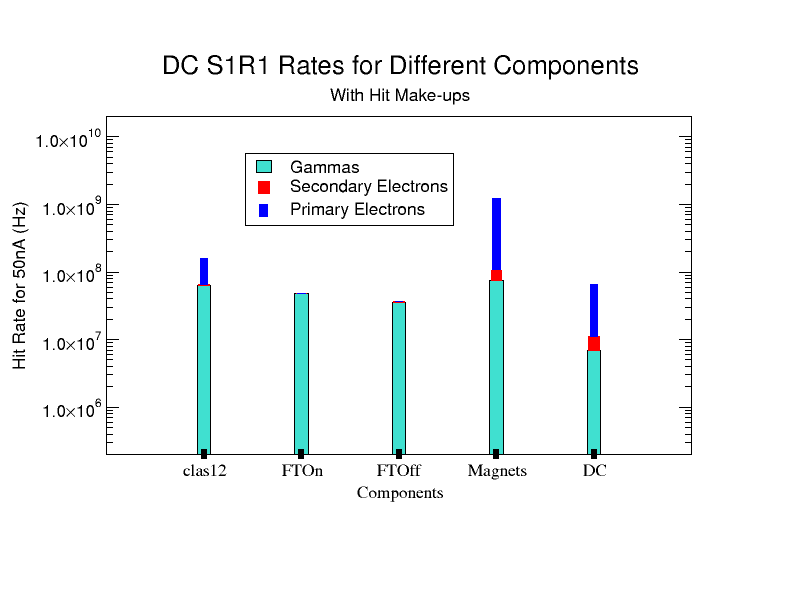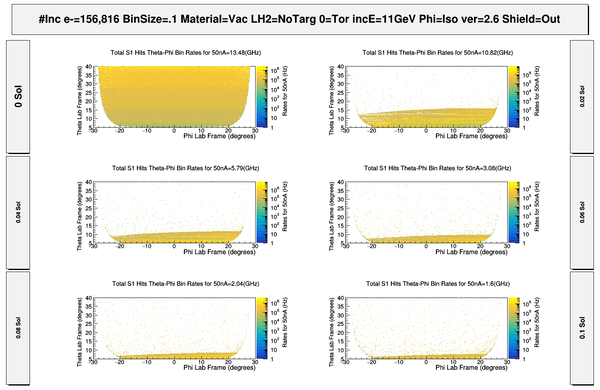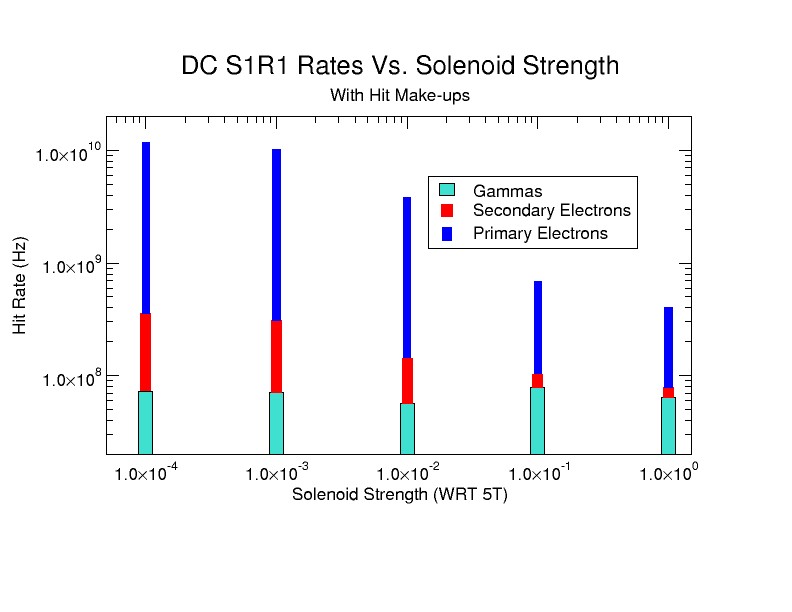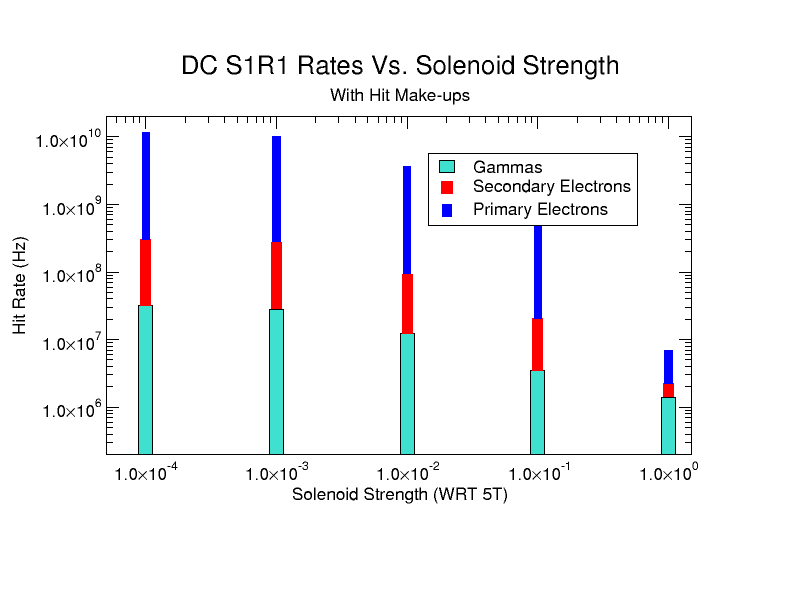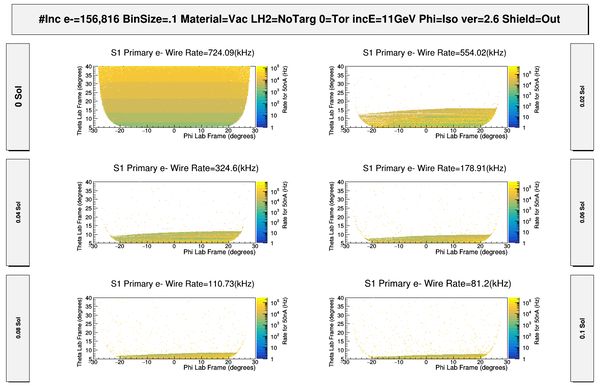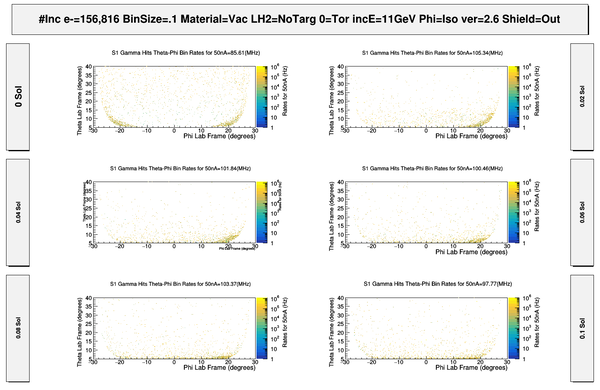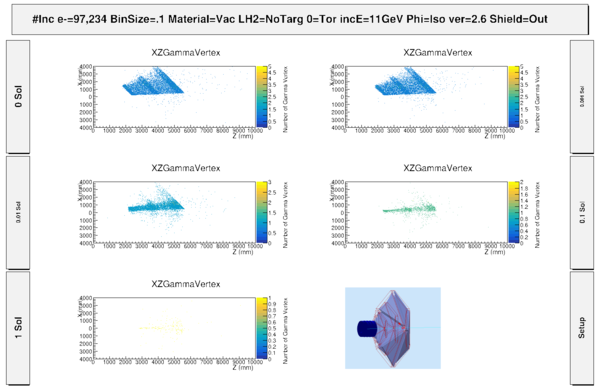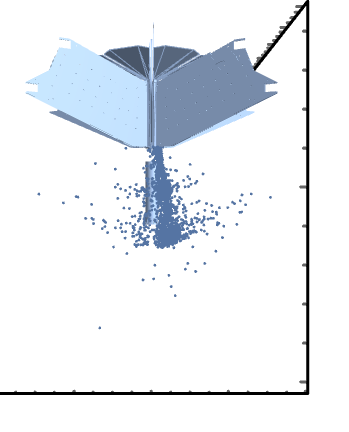Difference between revisions of "Mlr Summ TF"
Jump to navigation
Jump to search
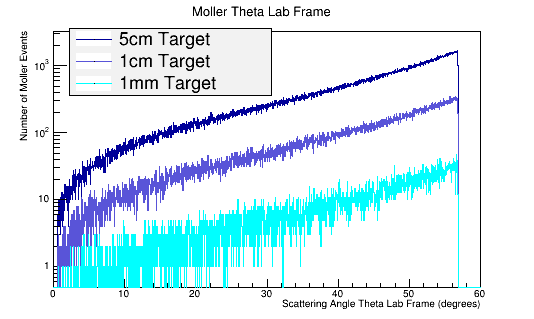
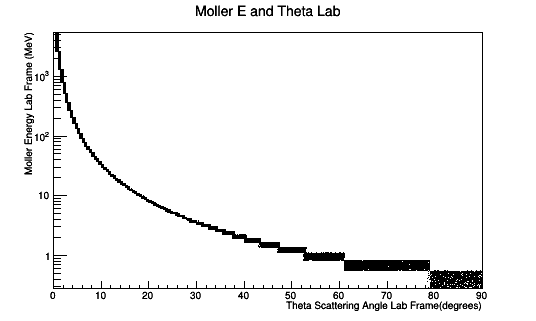
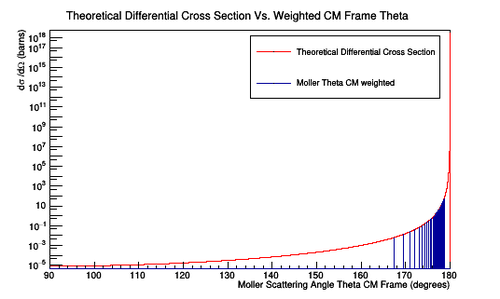
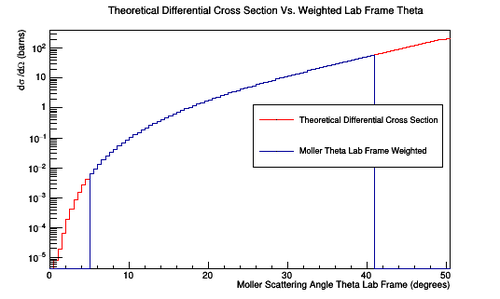
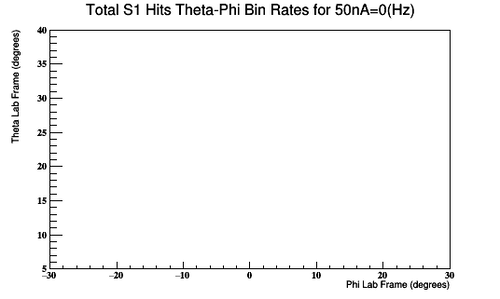
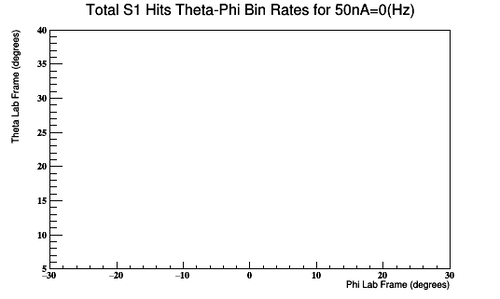
| Line 24: | Line 24: | ||
[[File:MolThetaCM_Theory.png |thumb | border | center |500 px |alt=Theory Frame Moller CM Frame |'''Figure 3a:''' A plot of the number of Moller scattering angle theta in the center of mass frame versus the theoretical differential cross section. The width of the bins is 0.001 degrees for the angles in the center of mass frame corresponding to angles of 5 to 40 degrees in the lab frame. A weight has been assigned for each value in theta which will give the theoretical differential cross section when applied.]][[File:MolThetaLab_Theory.png |thumb | border | center |500 px |alt=Theory Lab Frame Moller Frame |'''Figure 3b:''' A plot of the number of Moller scattering angle theta in the lab frame versus the theoretical differential cross section. The width of the bins is 0.5 degrees for the angles in the lab frame. A weight has been assigned for each value in theta which will give the theoretical differential cross section when applied.]] | [[File:MolThetaCM_Theory.png |thumb | border | center |500 px |alt=Theory Frame Moller CM Frame |'''Figure 3a:''' A plot of the number of Moller scattering angle theta in the center of mass frame versus the theoretical differential cross section. The width of the bins is 0.001 degrees for the angles in the center of mass frame corresponding to angles of 5 to 40 degrees in the lab frame. A weight has been assigned for each value in theta which will give the theoretical differential cross section when applied.]][[File:MolThetaLab_Theory.png |thumb | border | center |500 px |alt=Theory Lab Frame Moller Frame |'''Figure 3b:''' A plot of the number of Moller scattering angle theta in the lab frame versus the theoretical differential cross section. The width of the bins is 0.5 degrees for the angles in the lab frame. A weight has been assigned for each value in theta which will give the theoretical differential cross section when applied.]] | ||
| + | |||
| + | |||
| + | [[File:LowerMollerLUND.png]] | ||
| + | |||
| + | |||
| + | [[File:TotalS1R1HitsRate_LowerMoller_DCMagnets.png |thumb | border | center |500 px |alt=Lower Angle Theta Moller Electron Scattering in DC |'''Figure 4a:''' A plot of the number of Moller scattering angle theta in the lab frame versus the scattering angle phi. The width of the Theta bins is 0.1 degrees in the lab frame within the range of 0 to 6 degrees. Similarly, the width of the Phi bins in 0.2 degrees in the lab frame within the range of -30 to 30 degrees. Only electrons that would have fallen within the range allowed by the DC endplates have been included. Only the DC is simulated with endplates of Tungsten steel. ]][[File:Clas12_woTarg_LowerMoller.png |thumb | border | center |500 px |alt=Theory Lab Frame Moller Frame |'''Figure 3b:''' A plot of the number of Moller scattering angle theta in the lab frame versus the scattering angle phi. The width of the Theta bins is 0.1 degrees in the lab frame within the range of 0 to 6 degrees. Similarly, the width of the Phi bins in 0.2 degrees in the lab frame within the range of -30 to 30 degrees. Only electrons that would have fallen within the range allowed by the DC endplates have been included. The clas12 setup is simulated without a target.]] | ||
== Baseline== | == Baseline== | ||
Revision as of 20:15, 29 August 2018
VanWasshenova_Thesis#Mlr_Summ_TF
Moller Summary
Scattering Xsect

Figure 1: GEANT4 Simulation for the Moller electron scattering angle theta distribution for 6E6 incident 11 GeV electrons in the Lab frame of reference. The LH2 target reduces the mean free path of the Moller electron to around 60 degrees in the lab frame. This property of limiting the Moller angle is independent of the target length.
https://wiki.iac.isu.edu/index.php/Converting_to_barns

Figure 2: Using the theoretical differential cross section, the distribution of Moller electrons for a CM energy of approximately 53Mev can be distributed through the CM scattering angle Theta. Using Lorentz transformations, these distributions can be transformed to the lab frame. At around 60 degrees in the lab the Moller electron has an energy of close to 1 MeV. Such a low energy does not allow the Moller electron to leave the constrains of the target where they are created.

Figure 3a: A plot of the number of Moller scattering angle theta in the center of mass frame versus the theoretical differential cross section. The width of the bins is 0.001 degrees for the angles in the center of mass frame corresponding to angles of 5 to 40 degrees in the lab frame. A weight has been assigned for each value in theta which will give the theoretical differential cross section when applied.

Figure 3b: A plot of the number of Moller scattering angle theta in the lab frame versus the theoretical differential cross section. The width of the bins is 0.5 degrees for the angles in the lab frame. A weight has been assigned for each value in theta which will give the theoretical differential cross section when applied.

Figure 4a: A plot of the number of Moller scattering angle theta in the lab frame versus the scattering angle phi. The width of the Theta bins is 0.1 degrees in the lab frame within the range of 0 to 6 degrees. Similarly, the width of the Phi bins in 0.2 degrees in the lab frame within the range of -30 to 30 degrees. Only electrons that would have fallen within the range allowed by the DC endplates have been included. Only the DC is simulated with endplates of Tungsten steel.

Figure 3b: A plot of the number of Moller scattering angle theta in the lab frame versus the scattering angle phi. The width of the Theta bins is 0.1 degrees in the lab frame within the range of 0 to 6 degrees. Similarly, the width of the Phi bins in 0.2 degrees in the lab frame within the range of -30 to 30 degrees. Only electrons that would have fallen within the range allowed by the DC endplates have been included. The clas12 setup is simulated without a target.
Baseline
Moller events using an lH2 target geometry No Raster
DC hits -vs- Solenoid
With the Torus at zero Magnetic field the solenoid is changes to show how moller electrons move off the faces of R1 DC.
With Magnet Components
Without Magnet Components
With Only S1R1 DC
What happens when Endplate material is vacuum?
Moller Electron Events(1st hits)
Photons Hits in R1
Tomography
Moller events using an dual polarized target geometry with Raster
Photon Hits in R1 when Raster size has radius of 0.2 cm
Moller rate -vs- length of a single taerget
0.5 cm radius -vs- Z
Target is a one 0.5 cm radius cylinder of length Z.
By how much does the moller rate change at full field ?
